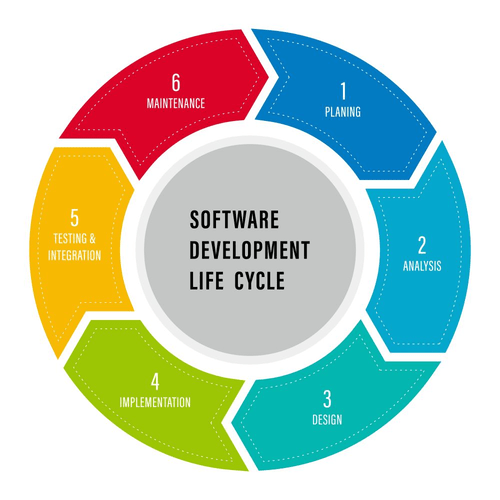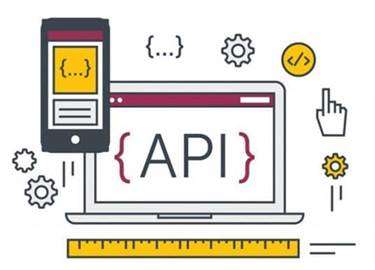Content
The basic goal here is to create and enable a culture of continuous improvement. Increase Operational Efficiencies – Simplify the software development toolchain and minimize re-work to reduce total cost of ownership. Security is built into DevOps in SAFeSAFe carries this sentiment forward, treating security as a first-class citizen. In SAFe, to say “DevOps” is to mean “DevSecOps.” Protecting our customers, employees, citizens, soldiers, families, and businesses is not something we choose to do or not do in DevOps. As such, modern security practices shine through in many areas of SAFe, including the Big Picture, framework guidance, courseware, assessments, advanced topics articles, and more. Build-Run teams are not DevOps teams in the traditional sense that devs and operations people sit together.
And, by focusing on the issues and problems to be solved , you can stay clear of digging up sore spots and old wounds and keep people on one side and the problem as the enemy. By having a fruitful and encouraging process to guide your DevOps creation and launch, you take a lot of the pressure off of the idea of two becoming one. Value Stream Mappingis one of the most potent ways to achieve a realistic view. Creating a culture that’s supported by streamlined and reliable DevOps can mean the difference between being number five in the market and number one. Freeing up your most valuable resource to innovate versus renovate is vital.

It is the lack of understanding of impact a business change has on technology plans. The image below shows what your cross-functional teams could look like. But keep in mind that their composition varies from team to team and from organization to organization.
Remember: There Is No right Team Topology, But Several bad Topologies For Any One Organisation
You will still need a team that defines which parts of the public cloud APIs and services to use and how. Where your suitability says “traditional ops team”, this really is a description of “gnarly old unix neckbeards, who refuse to do anything other than an old version of perl”. Find more DevOps team topologies at devopstopologies.comThe new version has many new topologies that we’ve encountered in the wild and we’re taking pull requests on Github for additions and changes. With over 400 employees, we deliver high-performance digital solutions that create business and technology transformation. As a high-growth firm, we have garnered awards and attention from the Pittsburgh Technology Council, the Inc. 5000, the Pittsburgh 100, and E&Y’s Entrepreneur of the Year. And, like every other phase of the DevOps model, instrumentation plays an important role.
Rethinking your physical workspaces fosters better DevOps teams, enabling faster collaboration and iteration to deliver new capabilities with new processes based on close human interaction. In 1993 the Telecommunications Information Networking Architecture Consortium (TINA-C) defined a Model of a Service Lifecycle that combined software development with service operations. Reviewing and reshaping the organization can help improve the delivery of value to customers through solutions that are more modular, easier to deploy and evolve, and built by more motivated teams.

Your pipeline should be designed in such a way that you can easily detect failures and major defects in the earlier stage of the pipeline. Failing fast and detecting the failures early will help your team achieve a more stable pipeline through continuous testing and experimentation. This article explores some thought-provoking questions that need to be asked and answered by organization leaders before and during the process of building their DevOps team.
An intensive, highly focused residency with Red Hat experts where you learn to use an agile methodology and open source tools to work on your enterprise’s business problems. Choosing reliable platforms, both inside and outside the container—like Red Hat® Enterprise Linuxand Red Hat OpenShift®—ensures that scaling and automation won’t fail when you need it most. With the right platforms, you can best take advantage of the culture and process changes you’ve implemented. Of course, this means more frequent changes to code and more dynamic infrastructure usage. Traditional management strategies can’t keep up with this kind of demand. This is probably the most important characteristic I see in our division.
For continuous deployment, that role is critical since your customer can now see how the new features perform. When implementing a continuous testing solution, safeguard that you have the right balance of coverage and speed to protect the product as it moves between deployment gates. This requires taking your automation beyond the QA execution layer. Once requirements are stable, it’s time for execution control, and that entails a well-configured Application Lifecycle Management tool like Microsoft’s Team Foundation Server or Hewlett-Packard’s Quality Center. These leverage the best Agile or Capability Maturity Model Integration template to organize the team’s tasks. Consider this your source of truth for implementation and measurement across the DevOps model.
Ops As A Platform
That’s why continuous integration and continuous deployment (CI/CD) is so important to DevOps teams. As businesses transitioned from a product-oriented development model towards a customer-centric approach, smaller release cycles, better quality, and seamless collaboration across DevOps teams became the need of the hour. DevOps is an innovative methodology that offers a set of practices that brings development and operations teams together to collaborate seamlessly and continuously deliver quality products faster and better. DevOps methods were initially formed to bridge the gap between Development and Operations so that teams could increase speed to delivery as well as quality of product at the same time. The focus of DevOps is to increase collaboration and feedback between Business Stakeholders, Development, QA, IT or Cloud Operations, and Security to build better products or services. DevOps is fundamentally changing how development and operations are done today.

The leaders of Engineering and Service Engineering are close collaborators who set an example for teamwork. There’s no “us versus them” tolerated, and issues that come up between the teams – and of course they do – are resolved quickly and decisively. You provide Netflix as an example of an org that is fully-integrated. However, I would argue that Netflix only appears fully-integrated because they are actually the best example of IaaS – being almost fully reliant on AWS for their infrastructure. These types of inconsistencies make question the “moderate” potential effectiveness you’ve assigned to the IaaS pattern.
Continuous Integration And Continuous Delivery
The DevOps engineer implements this plan to design and automate DevOps processes using the right tool stack and infrastructure as code techniques for the specific environment. The implementation of these tools will again be monitored by the DevOps architect across the product lifecycle. Continuous Integration and Continuous Deployment (CI/CD) sits at the heart of DevOps. This pipeline comprises integrated processes required to automate build, test, and deployment. In the Build phase, a compilation of the application takes place using a version control system. Here, the build is validated based on the organizational compliance requirements.

While many organizations focus on tools and technologies, people and culture are ignored. However, choosing the right people for the right tasks and inducing the DevOps culture across the organization delivers results in the long run. As such, security is automated too to be on par with continuous delivery in terms of speed and scale. Developers can easily follow the control implementation to adhere to compliance requirements.
Enterprise Services
As an example of how technology fits into an organization’s strategy, let’s consider a modern media company whose goal is to obtain the industry leadership in production and distribution of quality digital content. Although the business would not exist without technology, the company’s business objective is not software development; https://globalcloudteam.com/ it is the production and delivery of its media content. In this scenario, technology is an enabler of business, and the organizational structure should reflect that. Some organisations, particularly smaller ones, might not have the finances, experience, or staff to take a lead on the operational aspects of the software they produce.
- Continuous deployment extends continuous delivery pipeline further to automate the actual deployment.
- And today’s value streams must behave differently than they did in the old paradigm, largely because today’s technology delivery objectives are different.
- The Platform Engineer supports the platform teams to ensure that the environment supports the products effectively, and uses the tools provided to automate integration and deployment.
- Prior to joining Optum, Ryan acted as Managing Director for various consulting and new media organizations.
- Innovation HubsVery competitive rates due to lower-cost development centers in Argentina.
- Secondly, the leadership should recognize skilled individuals and train them to become leaders with personal support, coaching, etc.
The continuous integration server polls the version control system for code changes, retrieves the latest code, and builds it. A fully embedded operations team, where the systems engineer can code or the developer has deep infrastructure knowledge to deploy and scale the application is rarely feasible. Instead, you could go for a model based on close-knit collaboration between your Dev and Ops teams. Both teams should collaborate and share responsibilities from the initial planning phase to the continual monitoring of the production environment. Tactical responsibilities, often discussed as part of DevOps transformation, are local to technology teams.
Give your engineers the privilege of being able to focus and dig deep into their work. The benefits of this DevOps approach is having a dedicated team to address major infrastructure changes or adjustments. If you’re struggling with operations-centered issues that are slowing down your deployments or causing site reliability concerns, this might be a good approach — even temporarily. This participation allows developers to start understanding the frustrations of being called in the middle of the night and struggling while foggy-eyed and caffeine-deprived to fix a bug that’s impacting customers. Operations folks also begin to trust your developers’ commitment to their work. Clearly, there is no magic conformation or team topology which will suit every organisation.
While SRE predates the development of DevOps, they are generally viewed as being related to each other. Automation is a core principle for achieving DevOps success and CI/CD is a critical component. Plus, improved collaboration and communication between and within teams helps achieve faster time to market, with reduced risks. The microservices architecture is a design approach to build a single application as a set of small services.
Members of this team are sometimes called ‘DevOps Advocates’, because they help to spread awareness of DevOps practices. This topology might also be called ‘NoOps‘, as there is no distinct or visible Operations team (although the Netflix NoOps might also be Type 3 ). This topology is borne of a combination of naivety and arrogance from developers and development managers, particularly when starting on new projects or systems. The DevOps Team Silo (Anti-Type B) typically results from a manager or exec deciding that they “need a bit of this DevOps thing” and starting a ‘DevOps team’ (probably full of people known as ‘a DevOp‘). The Ops team should bring extensible automation to operations so that regular tasks such as scaling the infrastructure, updating systems, or resolving issues can be done in a smarter way.
Key 1: Organize Your Teams Around Customer Value
Read our slideshow about the best tips to create an IT team to succeed in your DevOps team. While working as a team is crucial, dealing with members at an individual level is equally important. Regular pep talks, motivations, and inspirations would boost the morale of members which will significantly impact the overall productivity of the system. However, the risk with small teams means that getting all the required expertise might be a challenge, and loss of a team member might significantly impair the team’s throughput. A general agreement is that team sizes should range between 5 and 12. Business System Teams who take full responsibility of the product lifecycle end-to-end, as well as managing business and end users.
Small Business
By way of example, a quality-of-life improvement does not directly affect anyone but that developer. However, potential productivity improvement due to the developer’s familiarity with the tools benefits the organization as a whole. In this case, a small local decision contributes to the strategic goal of improved productivity. But even with a potentially high-profile impact, this tactical decision should be made locally by the software team lead without invoking a chain of command or soliciting feedback from other departments. For smaller engineering organizations, aligning functional teams is a solid choice. Even as a first step, this alignment can reinforce the positive changes you’ve made so far.
Whole organization votes on which is the biggest “screw-up” and that person wins a nice dedicated parking spot for a month 😊. This resulted in a culture where people are open to share their mistakes and there by all of us can learn from it. Two, focusing on new capacities and not on old problems may be the gateway to organizational change.
Azure Devops Implementation: Three Lessons Learned
Having the Dev and Ops teams work together is a proven way to improve the software’s quality and tighten the release into production. Each team has different requirements devops organization structure and ethics that guide their workflow. Coming to a confluence on these ethics can be tricky and, if done wrong, can be fatal to the organization’s growth.

Recent Comments